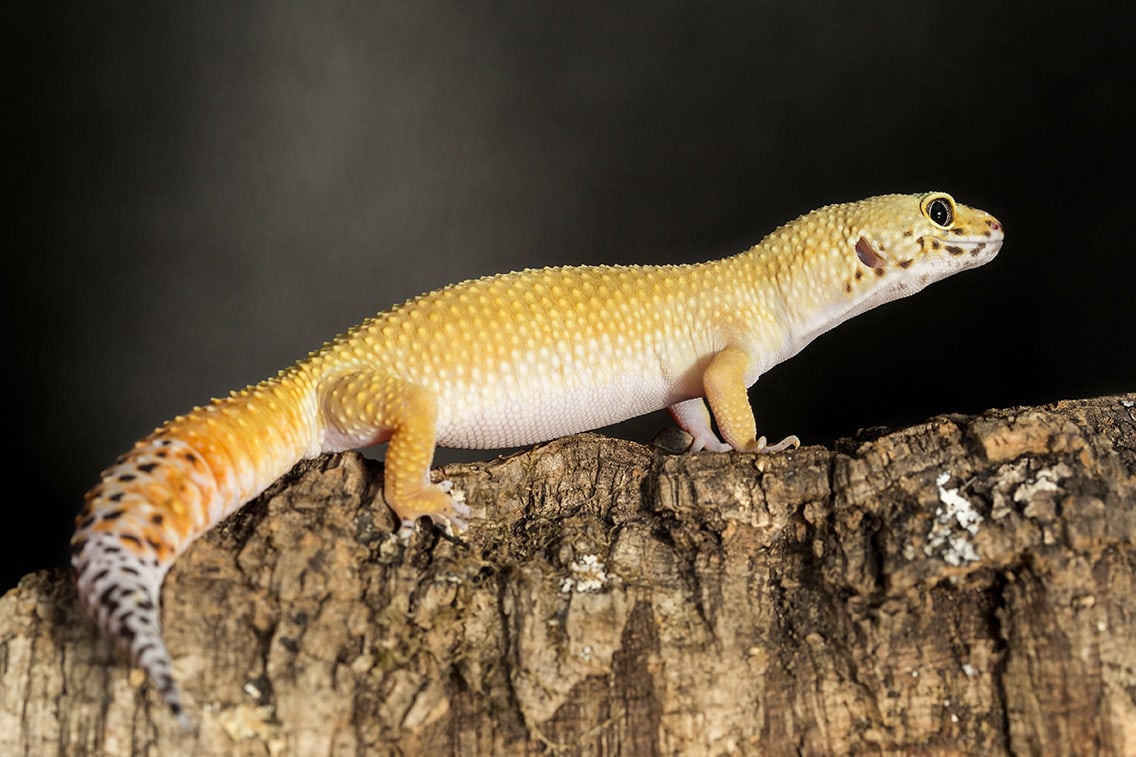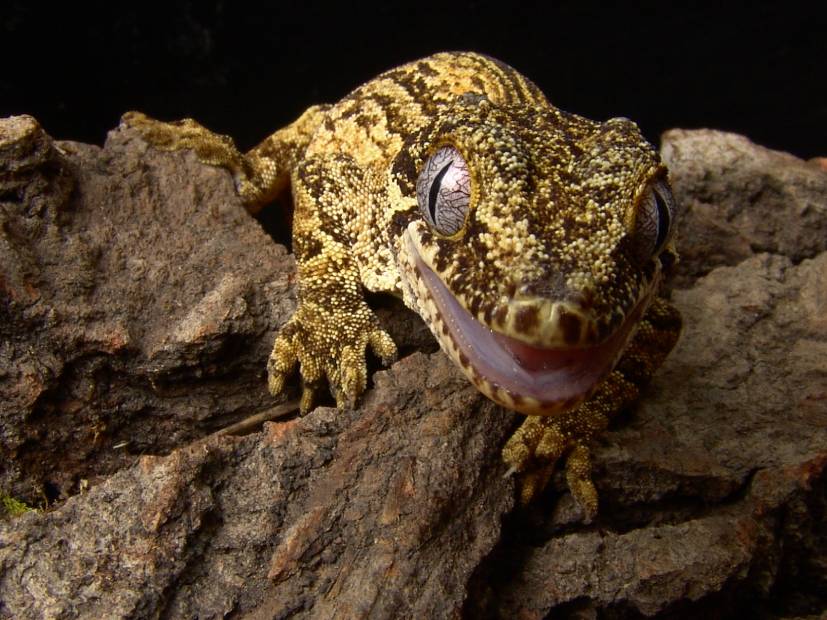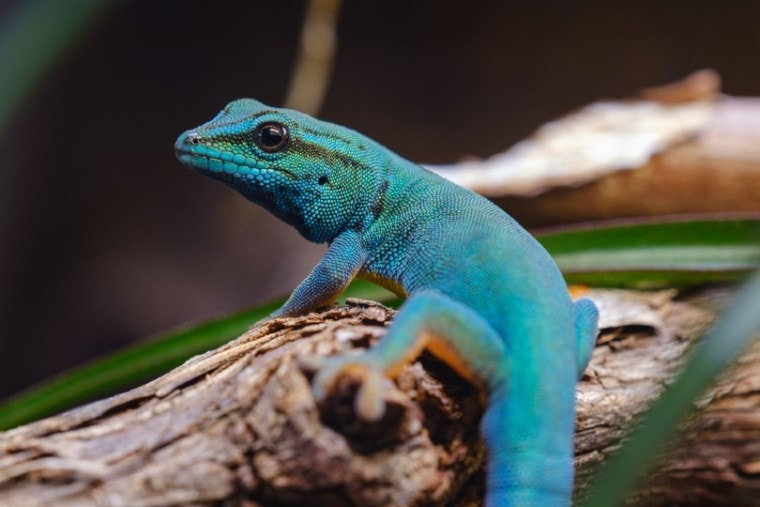
The William’s Dwarf Gecko is a truly stunning gecko species with its bright and gorgeous turquoise-blue body. However, it is this beautiful coloration that has driven up the demand for these geckos in the pet trade and led to the critically endangered status of the species. By some estimates, at least 15% of the population were collected as pets between 2005 and 2009 — that’s just four years. This, combined with habitat loss from deforestation and the restricted distribution of these lizards, has made a deadly combination for the species.
Fortunately, efforts have been made to preserve the species, and they are gradually coming back from the brink. In most areas, wild-caught specimens are still illegal, but wild geckos are still often sold in pet shops as captive-bred, and you should do your best to make sure you are buying a captive-bred specimen when purchasing.
If you are lucky enough to find one of these rare animals, read on to find out more about caring for this fascinating breed.

Quick Facts About William’s Dwarf Gecko
| Species Name: | Lygodactylus williamsi |
| Family: | Gekkonidae |
| Care Level: | High |
| Temperature: | 75 to 80 degrees Fahrenheit |
| Temperament: | Active, social, bold |
| Color Form: | Turquoise-blue (males), green-bronze (females) |
| Lifespan: | 5 -1 0 years |
| Size: | 3-inches |
| Diet: | Insects |
| Minimum Tank Size: | 12 x 12 x 18 inches |
| Tank Set-Up: | Bioactive terrarium |
William’s Dwarf Gecko Overview
The William’s Dwarf Gecko, also commonly known as the “electric blue day gecko” or “turquoise dwarf gecko” in the pet trade, has a restricted distribution. They are found exclusively in the Kimboza forest in Tanzania in an area only a few square miles in size, and they live almost exclusively on Pandanus trees, a species of palm-like trees. This restricted distribution in a (supposedly protected) single area, combined with the popularity of the pet trade (supposedly illegal), has made the species critically endangered.
Luckily, these geckos are hardy and breed well in captivity if they are provided with the correct environment.

How Much Do William’s Dwarf Geckos Cost?
Due to the challenges in captive breeding and the endangered status of wild specimens, these geckos are rare and difficult to find and can go for exorbitant prices. If you do manage to find one of these beauties for sale, you can expect to pay between $200-$300. It’s vital to make sure you are getting one of these geckos from an experienced captive breeder, as you do not want to be supporting taking endangered species from their natural habitat.
Typical Behavior & Temperament
William’s Dwarf Geckos are active little animals and are often described by enthusiasts as bold due to their ease and courage around humans. They are social geckos, but males are known to be territorial at times, and they will usually fight when housed together. They are diurnal, meaning they are active during the day. This is why a bioactive terrarium is ideal for the species. These dwarf geckos are fascinating to watch, with various unique social gestures including lateral flattening, puffing out the throat when they feel threatened, head bobbing, and even tail wagging. Since these animals are so small and fast, they are not the best for handling, but they are a joy to watch moving around in their environment.
Appearance & Varieties
William’s Dwarf Geckos are small animals, reaching only 2-3 inches long in adulthood. They are famous for their turquoise blue coloring, but this is only present in male specimens. These geckos display sexual dimorphism, meaning males and females look different and are easy to tell apart. Females are typically a green-bronze color and tend to lack coloration on their throats or minimal coloring at most, whereas males have black throat coloring. Both males and females typically have black stripes or spots around their nose and mouth, although it is more pronounced in males. Interestingly, juveniles all look the same, with similar coloring to adult females regardless of sex, and only in adulthood can they be easily determined.
Despite this difference in appearance, one of the most challenging aspects of breeding is determining sex. This is because only mature, dominant males will display the bright turquoise coloration, and if two or more males are housed together, the subordinate males retain the same coloration as females.


How to Take Care of William’s Dwarf Gecko
Enclosure
Being so small in size makes housing a Dwarf Gecko both easy and challenging at the same time. They do not need much space to thrive — a 12x12x18 inch tank is great — but finding a suitable-sized terrarium can be difficult. Their small size can easily cause them to get stuck behind small rock backgrounds or in hidden crevices, so you need to make sure there is nothing in their enclosure for them to potentially get stuck inside of. You’ll want the tank to be higher than it is wide to fit furnishings like stumps and plants and have a mesh screen top for ventilation.
Temperature and humidity
Since the William’s Dwarf comes from a naturally warm climate, you’ll want to mimic these warm temperatures as closely as possible. Humidity and temperature control are essential for such a small reptile, as even a slight change can prove disastrous. These geckos do best with a steadily maintained temperature of 75-80 degrees Fahrenheit, with a slight drop at night. They’ll need a constant humidity of around 60% and up to 100% at night. A hygrometer is an essential tool to monitor humidity, as these sensitive geckos can swiftly die with low humidity levels.
You’ll also need to provide them with a warm basking spot of around 90 degrees Fahrenheit, but make sure it’s in a separate part of their tank that they can easily escape.
Substrate and accessories
These geckos spend most of their time on rocks and woody plants, so these need to be provided in ample amounts. Live plants inside a substrate of organic soil and moss around 3-4 inches deep are great. These will help keep the humidity levels high, but make sure you use plants that are suitable for moist environments.
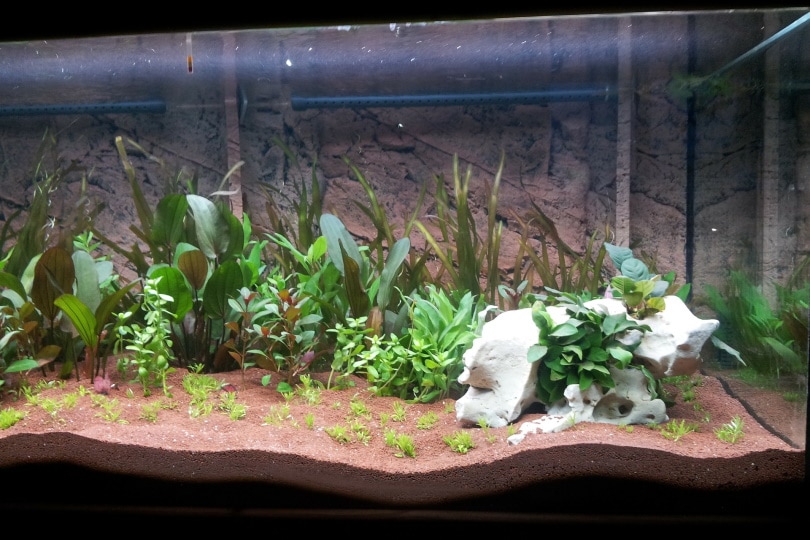
Lighting
Good lighting is essential for good gecko health. A temperature gradient is necessary inside your gecko’s enclosure, and the lighting should not heat up the entire tank. A UV light, basking light, and a daylight florescent are the ideal combination. You’ll want to mimic the lighting of their natural habitat, so having 12-14 hours in summer and 10 hours of light during winter is a good rule of thumb.
Do William’s Dwarf Geckos Get Along With Other Pets?
William’s Dwarf Geckos are best housed alone or in opposite-sex pairings. Males are known to be highly territorial at times and will generally not tolerate the presence of other males. While they are generally docile and tolerant of other gecko species, it’s best to keep species separated to avoid the risk of fighting and illness. Of course, any larger lizard species should be kept far away because they’ll make a quick meal of your dwarf geckos.

What to Feed Your William’s Dwarf Gecko
One of the biggest challenges of keeping dwarf geckos, especially juveniles, is finding food that is small enough to feed them. They are active little animals and need a high-quality nutritious diet and fresh clean water to maintain their active lifestyle. These geckos may drink from small water bowls but rarely do so. They get most of their hydration from drinking water droplets caused by humidity.
You’ll need to feed your gecko the smallest of insects, no more than ¼ inch long. This can include fruit flies, week-old crickets, small houseflies, mealworms, and small beetles. These should be given daily and ideally dusted with a mineral supplement to ensure that your geckos are getting the required nutrition, although it should be used sparingly to avoid over-supplementation. In the wild, these geckos will eat a wide array of insects, and you’ll want to mimic that in captivity.
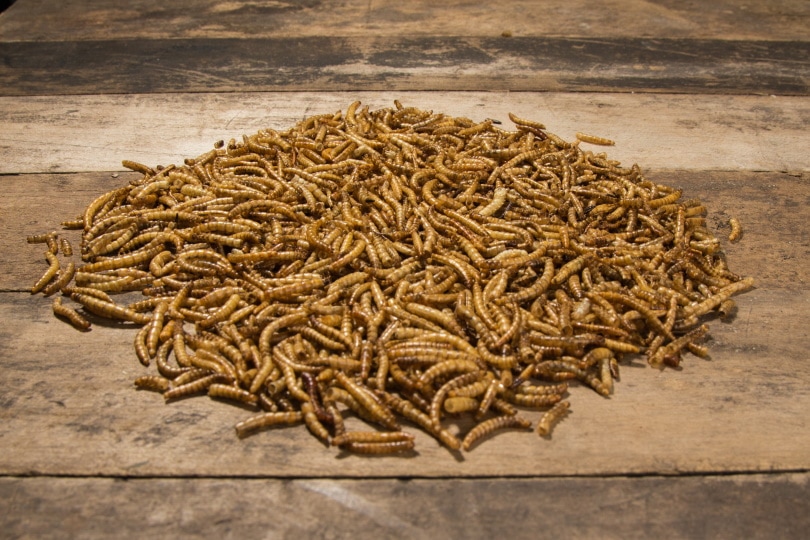
Keeping Your William’s Dwarf Gecko Healthy
Provided that your William’s Dwarf Gecko has a well-kept environment with adequate humidity and the correct temperature and a well-balanced diet with plenty of good nutrition, they are healthy animals overall that suffer from few health issues. The most important part of keeping these lizards is humidity, as without it, their skin will dry out and they can swiftly perish. Warm, constant temperatures are a must, as well as a varied, nutrient-dense diet.
One of the most common health issues with these geckos is injuries sustained from falling. They are quick and can easily jump out of your hands while handling, so you need to be extra cautious and keep handling to a minimum. If all these requirements are met, your dwarf gecko will live a long and healthy life.
Breeding
While these dwarf geckos are endangered in the wild, they are fairly easy to breed in captivity. If you keep a male and female together, they will most likely breed and lay eggs. However, hatching and raising offspring is the real challenge. Females will “glue” their eggs to laying sites, usually in small cracks and crevices. If they do not have access to a nest, they’ll often use the tank walls, and the eggs can be impossible to move without damaging them.
The key to successful breeding is to provide appealing laying sites that you can later remove to controlled conditions. Interestingly, the sex of these geckos is determined by incubation temperature, and with a controlled incubator, you can control the outcome. Temperatures of 70-75 degrees Fahrenheit will usually produce females, 78-81 degrees produce both sexes, and higher temps almost always produce males.

Are William’s Dwarf Geckos Suitable for You?
If you are lucky enough to find one of these beautiful animals, they make wonderful pets indeed. They are fairly challenging to care for, but once you have their environment set up with the correct humidity and temperature, keeping them healthy and happy is not too much of an issue. Feeding them is one of the most difficult aspects because it can be a challenge to find small enough food, especially for juvenile geckos.
William’s Dwarf Geckos are amazing animals to observe, and you can count yourself truly lucky to have the privilege of owning one!
Featured Image Credit: Jukka Forsten, Shutterstock


